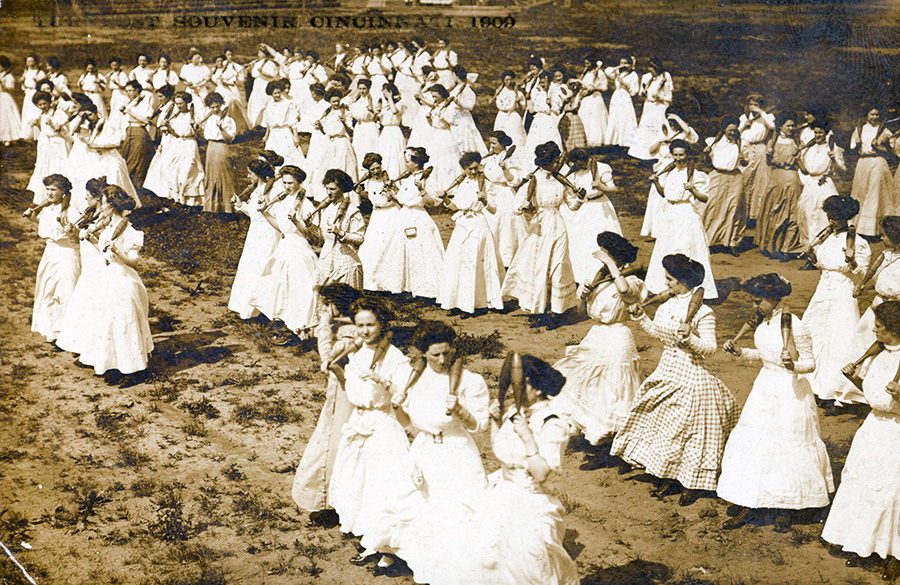By: Kevin Grace
 On a hot June day in 1909, thousands of people gathered at the Carthage Fairgrounds just beyond the city limits of Cincinnati. There on the nubby dusty infield of the racetrack, groups of women clad in long dresses divided themselves into squads of threes and fours and faced the spectators. In each hand they held an “Indian club,” a standard piece of gymnasium equipment at the time, and as the crowd watched, the women began a series of intricate, graceful movements, swinging the clubs up from their sides and around their bodies, crisscrossing the clubs in patterns that emphasized coordination and discipline. The demonstration was just one of several exhibits of mass exercises at the quadrennial Turnfest that was hosted by the Cincinnati Turners organizations that year, a fitting location as the American Turner movement was founded by German immigrants in Cincinnati in 1848.
On a hot June day in 1909, thousands of people gathered at the Carthage Fairgrounds just beyond the city limits of Cincinnati. There on the nubby dusty infield of the racetrack, groups of women clad in long dresses divided themselves into squads of threes and fours and faced the spectators. In each hand they held an “Indian club,” a standard piece of gymnasium equipment at the time, and as the crowd watched, the women began a series of intricate, graceful movements, swinging the clubs up from their sides and around their bodies, crisscrossing the clubs in patterns that emphasized coordination and discipline. The demonstration was just one of several exhibits of mass exercises at the quadrennial Turnfest that was hosted by the Cincinnati Turners organizations that year, a fitting location as the American Turner movement was founded by German immigrants in Cincinnati in 1848.
The festival attracted Turner athletes from around the country and around the world, all journeying to Cincinnati as they had to other cities in past years to exhibit the Turner philosophical ideals of physical and mental fitness, and civic responsibility. In the days before the ladies’ exercise with Indian clubs, students in the city’s schools demonstrated the skills they had learned in physical education classes, a mainstay of the public school academic program in Cincinnati. The proper uses of parallel bars, wands and rings, and the pommel horse were performed in front of school officials and Turner judges. It was a program already several decades old, begun in earnest after the Civil War when secondary and primary teachers learned the techniques of physical fitness and health promotion under the leadership of Turner instructors. Continue reading
